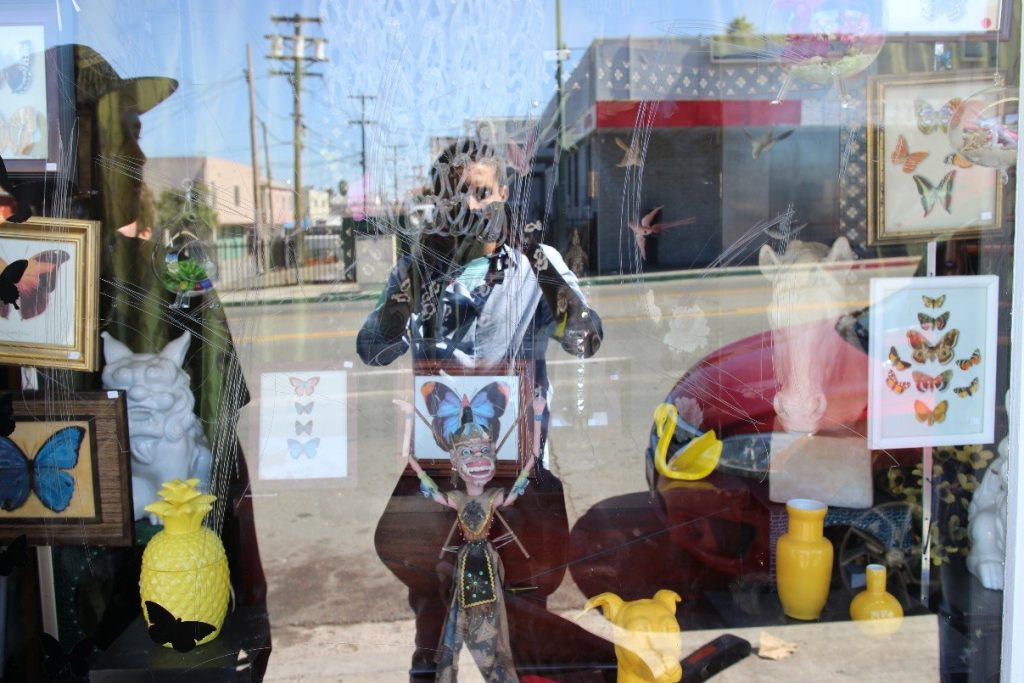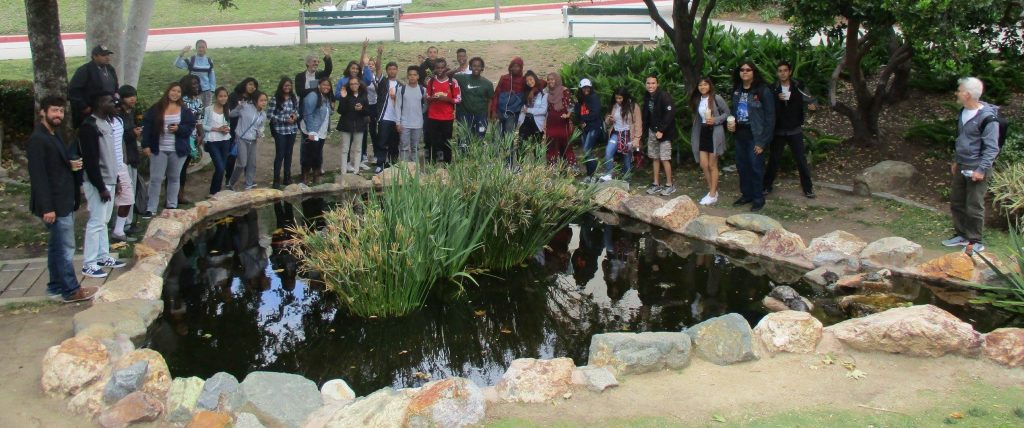Purpose:
The purpose of the project was to investigate how cultural diversity plays out at a neighborhood scale and to illustrate how people of vastly different cultural backgrounds can co-exist, develop strong connections to place, and even thrive within a local environment where differences.

A Crawford High School student examines the neighborhood landscape while conducting research for the Crawford Community Kaleidoscope Project.
Study Area:
The project study area included the Crawford High School campus and the surrounding neighborhoods where students reside with their families.
Project Methodology:
This was a participatory project in which a university-based team of researchers engaged and trained a group of high school students to conduct research about their own community. The project tapped into the perspectives and experiences of individual members of the community through interviews, photography, and landscape analysis. Student researchers acquired research and technical skills and gained experience with community leadership. They also produced a rich collection of materials representing the neighborhood through the eyes of people who live and work there.
Project Team:
- SDSU Geography Department: Stuart Aitken, Dr. Thomas Herman, Elliot Pearson, and Jasmine Arpagian
- Crawford High School Staff: Social Studies Teacher Ken Flaherty, Student Teacher Jody Herman, Educational Aide Latonia Miller
- Crawford High School Students: Omar (Yahya) Ahmed, Nimo Ali, Aweyso Aweyso, Julio Camacho, Victor Cecena, Esther Cing, Annilene (Annie) Contreras, Sa Je Da, Betsy Frausto, Cesar Garcia, Sacid Jama, Abraham Lara, Leonilo Latorena, Ngea Lay, Terrell D. Lewis-Raye, Cesar Licona, Malaysia McBride, Celina (Lili) Mendoza-Sosa, Vanessa Montalvo, Juan Nava, Divine Ngabire, Yliam Perez, Pray Reh, Pedro Romero, Johnathan Santizo Santos, Robert Selmon, Asma Shareef, Shell Shell, Mya (MT) Thein, Adam Vargas, Mario Velarde Pacheco, Asma Shareef, Adam Vargas, Angela Vilda, Carlos Zambrano
Project Outcomes:
- The project engaged 105 individuals, each of whom contributed some information through an interviews, focus group discussion, or photographs of the neighborhood. The assembled voices reflect a great deal of the diversity of the Crawford community.
- The project trained an extremely diverse group of 34 high school students, nearly all refugees and immigrants, in research methods and mapping and provided them with an opportunity to exercise community leadership. The entire group of students also had the opportunity to visit and tour the SDSU campus (see photo, below) and participate in some computer-assisted mapping in one of the Geography Department labs.
- The students created an interactive digital map of the Crawford community that incorporated interview excerpts and photographs of the neighborhood landscape. The map was then incorporated into a website by a smaller group of 6 students working at SDSU during the summer of 20016. The site is designed to be the primary mechanism for sharing the results of the project with the community and the wider public. Please visit the project website at Crawfordmap.sdsu.edu!
- A group of Crawford students gave a presentation about their experience with the project to a group of San Diego County teachers as part of a California Geographic Alliance teacher training workshop in July 2016.

The students from Mr. Flaherty’s 11th grade World History and Geography class gather for a photo on the campus of San Diego State University.
- SDSU graduate student Elliot Pearson has developed a master’s thesis research project related to the fieldwork conducted with Crawford students as part of this project.
- View full report here
Project conducted in honor of Dr. Mark David Mann, graduate of Crawford High School
